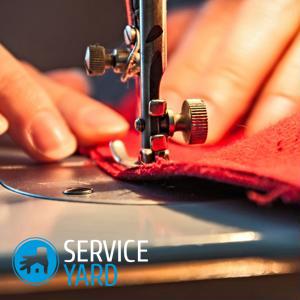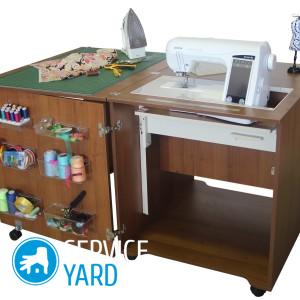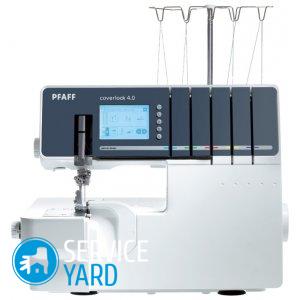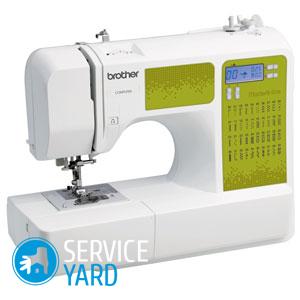Repair of sewing machines
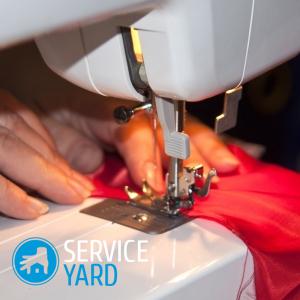
Very often, in violation of the operating rules of the sewing machine or non-compliance with the basic settings, this equipment breaks down. Most often, the main reason for such a nuisance is the use of fabrics that are not intended for the selected model of sewing equipment. That is why sometimes you can fix problem areas yourself without resorting to the help of experienced professionals. In this article we will consider the repair of sewing machines with our own hands, we will determine the most problematic areas and the basic rules of operation to avoid all kinds of problems in the future.
to contents ↑Basic rules for the operation of the sewing machine
The main recommendations for use will help you to use such equipment for a long time at home without the need to repair the sewing machine:
- Sewing equipment must be placed in a room with a dry microclimate, away from heating appliances.
- You need the right selection of sewing needles and thread matching in thickness.
- Before starting work, the sewing needle and thread guide must be set to the upper position.
- It is necessary during the sewing process to help the sewing machine to delay the progress of the fabric by hand, otherwise problems arise with the needle.
- Having finished working with the fabric, it is necessary to raise the presser foot, pull out the material and cut the working thread at a distance of 6-8 mm. Next, you need to fix the foot with the needle in the lower position, after putting a piece of fabric under the foot.
to contents ↑Important! If you continue to plan to develop your skills in this needlework, you may need information on how to make practical table for sewing machine.
How to understand that a sewing machine needs repair?
Only a highly skilled craftsman can cope with a serious breakdown, but you can solve the problem yourself, since most often you only need to adjust the optimal tension force of the thread or make the correct installation of the needle relative to the shuttle.
The main parameters that indicate the necessary repair of the sewing machine:
- instability of the stitch (presence of gaps in the line, breakage of the lower or upper thread, different lengths);
- the sewing process occurs with violations (pulling the working material into an “accordion”, pulling the thread into the stitch too strong or too weak);
- the stable movement of the sewing machine is broken (heavy running, there is a lot of noise during operation, there is a sudden jamming or breakage of the working needle).
All these factors indicate the need to inspect the sewing machine and repair problem areas.
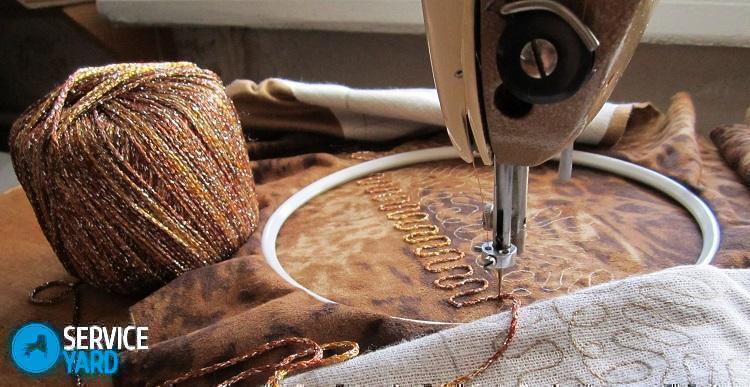
Malfunctioning
The neglect of recommendations, as well as low-quality materials contribute to various problems in the operation of sewing equipment. Consider the most common problems and possible solutions:
- Interruption of the upper thread indicates an incorrect needle setting or mismatch of thread and needle numbers. Having a bent needle or a tightened thread can also create this problem.
- A break in the lower thread indicates poor winding of the thread in the bobbin or the presence of barbs. The presence of loops indicates a slight thread tension or mismatch in the needle and thread numbers.
- When sewing, fabric advancement does not occur. First of all, it is necessary to check the location of the teeth. They can neither be very lowered, nor much raised. In addition, the dust present under the needle plate may also cause this problem.
- The sewing process is accompanied by cutting through the material. To solve this problem, it is necessary to check the needle for compliance with the selected thread and how correctly it is installed. Reducing the pressure of the presser foot can often solve this problem. In addition, tissue cutting occurs due to burrs on the teeth.
- The severity of the sewing machine is due to poorly lubricated equipment. It should be taken into account that a very high temperature in the room contributes to the thickening of the lubricant.
- During the sewing process, sudden braking of the sewing machine occurs. The reason may be the multiple winding of the working thread in the area of the bushing and flywheel.
Important! After eliminating all the malfunctions and stable work of your assistant, it is time to try it out in new experiments. We suggest that you read the detailed instructions for sewing leather on a sewing machine.
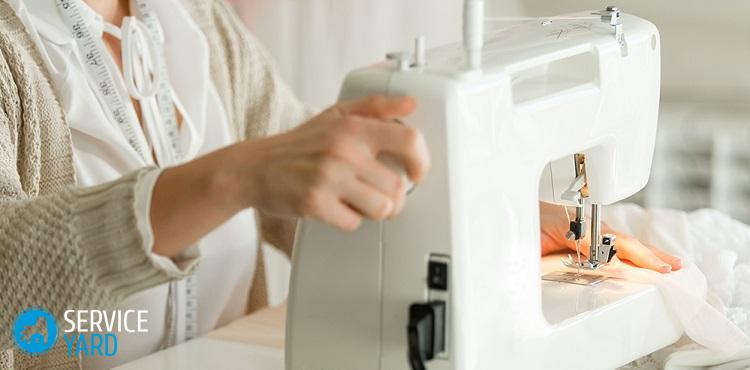
How to repair a sewing machine yourself?
Before starting an independent repair of the sewing machine, you must carefully inspect the working needle and the shuttle, as well as adjust the manual settings to avoid troubles. Usually these actions are quite enough to resume the normal operation of sewing equipment.
Important! Timely cleaning and lubrication of parts will help prevent the occurrence of most troubles and allow less frequent repairs to the sewing machine.
Unstable stitch
This problem can be caused by such factors:
- the nose of the shuttle is dull;
- the needle mount is loose;
- the selected needle is too thick for the fabric;
- wrong size of needle eye and thread;
- the needle is not installed correctly;
- defective working needle.
To check the bentness of the used needle, you must carefully examine it with a magnifier. If, as a result of the check, a needle marriage is found, then this element must be replaced. This process must be carried out very carefully, since an incorrect position of the needle can provoke a break in the thread.
Important! In most sewing machines, the needle is set so that the sawn side of the bulb is placed in the opposite position from the seamstress, and the groove for the thread is located on its side.
Due to the strong tension of the threads or their contact with a rough surface, breakage of the threads may occur during operation. In this case, it is necessary to carefully inspect the shuttle, and if unevenness is found, it is necessary to level them with fine emery paper or a polishing file. Such repair of the sewing machine must be carried out very carefully so as not to create new scratches.
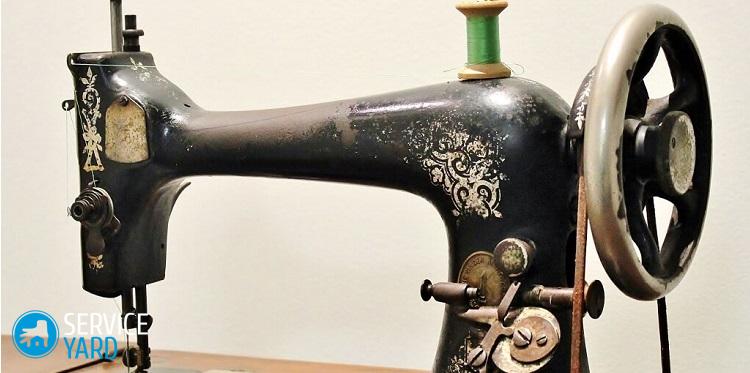
Violation of a line
Depending on the types of line breaks, various actions are taken to eliminate them:
- If the fabric is pulled into an “accordion”, then the problem lies in the different operation of the needle and the device that moves the fabric. To check this parameter, you need to pay attention to the process of the teeth. They should almost completely hide under the plate at the moment when the needle is almost close to the plate.
Important! It is not recommended to independently solve this problem, so it is better to seek the help of an experienced specialist.
- Tightening the stitch is triggered by too much tension on the upper thread or a weak pressure of the foot on the fabric. In this case, it is necessary to correctly adjust the pressure and tension of the threads.Also, this problem may occur due to wear of the teeth of the rail or the smooth surface of the foot.
- Stitching is triggered by excessive threading. To solve such a problem, it is necessary to adjust the running parameters of the shuttle or get rid of irregularities on the parts that are used to pass the upper thread. Such repair of the sewing machine will restore its normal functioning.
Violations of the stable course of the machine
There are several reasons that violate the stable course of the needle and cause the need to repair the sewing machine:
- The sewing process is accompanied by a difficult move. This problem may arise due to poor lubrication of the surfaces of the parts, weak tension of the electric drive belt or clogging of the shuttle mechanism with sewing garbage.
- Long idle time of sewing equipment causes jamming in the sewing process. If the sewing machine has not been used for a long time, then before starting work it is necessary to use machine oil and lubricate all the details. When idling is started, the oil will be distributed over all the details, providing a smooth ride.
- The needle may not be matched correctly. For each type of tissue there corresponds a specific needle number. Otherwise, with the wrong thickness, the needle may break. In addition, it is necessary to precisely install the needles so that there are no displacements or distortions during fastening.
Important! Only high-quality machine oil must be used, since improper oil can form a sticky mixture on the surface of the parts that resembles glue. At the same time, the details of the mechanism are not able to function smoothly, as a result they inhibit the stable course of the sewing equipment.
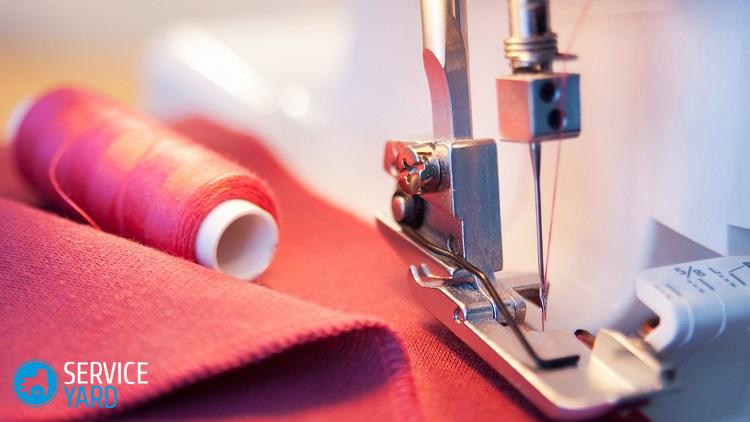
Serious issue - knocking sewing machine
When operating a sewing machine, all of the above problems are easily eliminated. But sometimes more serious problems arise, the solution of which requires knowledge in the design of this equipment or you need to contact a professional specialist. One of the common problems is the characteristic knock of a sewing machine. The resulting gap between the surfaces of the bushings of the main shaft device indicates a characteristic knock.
To repair the sewing machine, you must perform the following actions:
- If a manual drive is present in the sewing machine, then it is removed.
- A special L-shaped screwdriver unscrews the stop screw from the nut.
- The flywheel is removed, then the conical bobbin.
- Remove the sleeve from the main shaft device.
- A tin washer is mounted on a shaft device. You can cut such a washer out of a can, if there is no original spare part at hand.
- Next, the mechanism is reassembled, and the mutual arrangement of the bobbin and the sleeve must be strictly observed.
- The rotation of the shaft is checked. If in this process it is necessary to exert some effort, then the bobbin cannot be deepened.
- The remains of the tin washer are cut off.
Important! Usually one tin washer is enough, but there are times when you need to use several washers to eliminate the gap.
The cause of knocking in the sewing machine can serve as blows of the rack on the needle plate. To eliminate this problem, you just need to turn the rail 180 degrees.
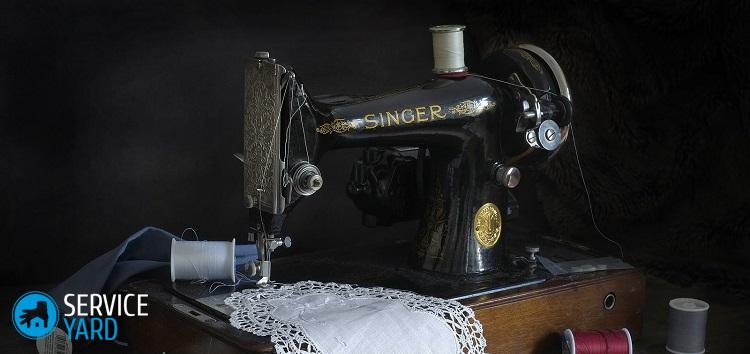
The needle is a key element
The cycle of operation of the sewing needle is measured using the number of punctures, and over time the blunting of the tip occurs, which provokes the bending of the working needle. That is why very often to repair the sewing machine you just need to replace this device, since it makes no sense to repair the needle.
Important! Needles need to be replaced very carefully, since the performance of the sewing machine directly depends on the needle.
The correct position of the needle in the needle bar is when its blade is on the side of the hook and is firmly fixed. There should be a complete absence of minor staggering of this part and a variety of backlash.
Important! When choosing a needle, one must also take into account the type of fabric, because a correctly selected point greatly simplifies the process of passing the thread through the fabric, and prevents the appearance of unwanted gaps in the stitch.
Needle bar and tensioner mount
Very often, the upper thread causes a disruption in the process. The main problems that arise and require repair of the sewing machine:
- Poor fixing of the tension regulator contributes to the breakage of the thread, uneven stitching, looping and skipping stitch. A screwed screw presses on the case made of plastic, as a result of which after some time the tensioner starts to stagger or completely falls out of the case of the sewing machine.
- Using sewing fabrics with a coarse-fiber structure, intersecting seams of leather products or when hemming the bottom of jeans, the needle bar device moves to the top point with the needle. To put it back in place, loosen the screw and adjust the position of the needle bar. The groove and blade should be in the correct direction with respect to the shuttle device.
Important! We will not exclude the situation when your assistant has simply worked out her resource and is no longer able to fulfill her direct duties. Or she’s so morally outdated, and you strive to learn new and new models of clothing that she does not quite suit you in terms of functionality. In this case, it makes sense not to think about repairing the existing model, but to pick up a new one. Our ratings and reviews will help you with this:
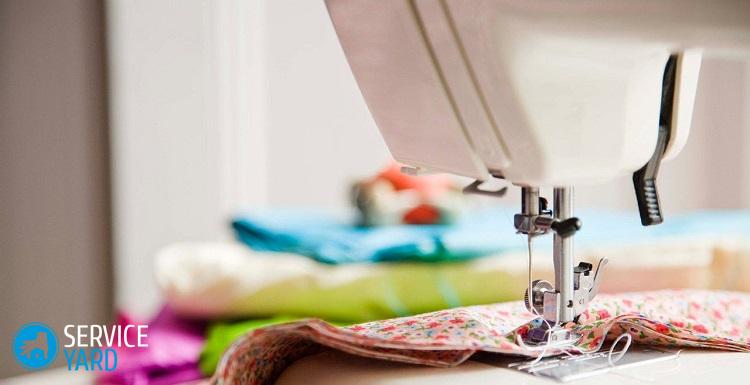
Setting the interaction of the hook nose and the needle
The parameters of the interaction of the shuttle and the needle affect the quality of the sewing machine. Non-observance of these standards can lead to various line defects, for example, gaps, breakage of the upper or lower thread, looping. That is why when working with a sewing machine, it is very important to adjust the correct distance between the hook nose and the needle, because these details should not be in contact.
Important: Normally, the distance should be between 0.1 and 0.5 mm, but it is worth remembering that wider restrictions on the needle travel require a greater distance.
How to set up and repair a sewing machine:
- The hook nose should come very close (0.15 mm) to the needle blade at the moment of its raising by 1.8 - 2.0 mm and be 1.5 mm higher than the needle eye. These values are indicative in the process of setting the shuttle stitch, but vary depending on the type of fabric and thread.
- If you make the wrong setting with a negative offset, then in the process, the needle will constantly beat on the shuttle and gradually become dull. This error is not always easy to notice, since the process of the sewing machine is very noisy. To eliminate this problem, foil is needed. It must be bent in several layers and put in the right area under the hook mount, while tilting the assembly of parts in the right direction.
- If the needle and the shuttle are absolutely incorrectly positioned relative to each other, then repairs must be made immediately in accordance with the regulations. Otherwise, the sewing machine will not function normally.
Important! The quality of the shuttle stitch is affected by the rail, presser foot, upper thread tensioner, bobbin, compensation spring, as well as other working units and parts.
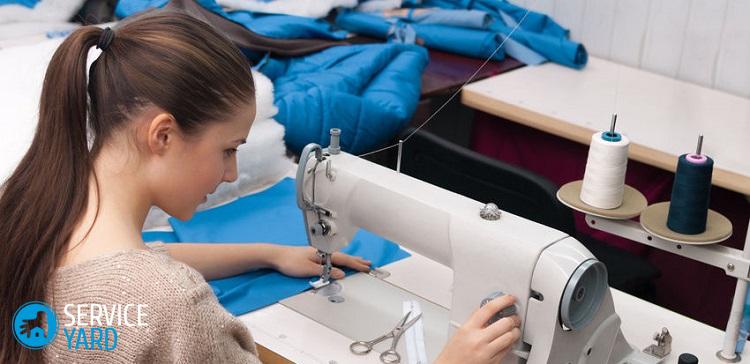
Sewing Machine Lubrication
Each sewing machine has a technical passport, which indicates how to care for this equipment. Since the sewing machine has a lot of moving parts, they must be lubricated periodically.
Important! On the case there are special holes for lubrication, and the oiler with an elongated tip is included in the kit of the sewing machine. If the amount of grease is not indicated in the instructions, then it is enough to drip once into the hole on the housing.
The technical passport describes the permissible means for lubrication, and here are the most common:
- For the lubrication procedure, you can use ordinary vaseline oil, which contains a component of refined oil. Due to its composition, this tool is widely used in cosmetics, medicine, food industry.
- Mineral oil can also be used for the lubricating process. If it is necessary to switch to synthetic grease, first of all, it is necessary to cleanse the old grease, otherwise the most unforeseen consequences may occur.
- For old manual models of sewing machines, it is possible to use gasoline as a lubricant.
Important! Modern models have a plastic case, so you need a special high-quality product that will not be harmful to polymer compounds.
In manual sewing machines, it is recommended to lubricate the surfaces of parts during each process, and not once every six months, as some sources advise. The lubrication procedure of the surfaces of the parts increases the wear resistance of the electric motor, which accounts for the main load. Increasing the service life of sewing equipment directly depends on the quality of the lubrication process.
Important! When switching to another oil for lubrication, it is very difficult sometimes to eliminate the consequences of the previous lubrication, therefore it is advisable to constantly use the same high-quality tool for lubricating parts.
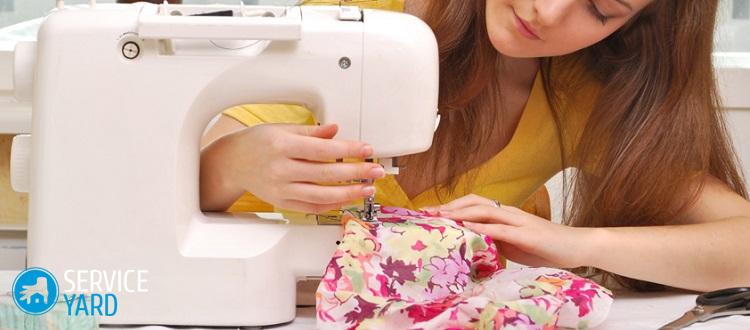
Repair of sewing machines (zigzag) type Seagull
Most often, repair of the Chaika sewing machine is not associated with the breakdown of individual parts, but because of the misregistration of the interaction between some nodes of this device.
The most common problems and solutions:
- Winding thread in a line. The main reason is the uneven tension of the working thread, which occurs due to a rusty sole of the foot, a broken compensation spring or improper installation of the shuttle stroke.
- There is no winding of the lower thread on the bobbin - to solve this problem, you just need to replace the metal bobbin with a plastic one.
- Problems with the shuttle - first you need to check the nose of this part for nicks and rust spots. If there are any, then it is necessary to remove them with a fine needle file, and then carefully polish. This process must be carried out very carefully so as not to accidentally blunt the tip of the shuttle nose.
- Poor adjustment of the upper thread - it is necessary to check if there are any tows from the threads between the tensioner plates, since they do not allow the washers to fully compress.
Stock footage
Now you know the main points regarding the repair of sewing machines and you can eliminate most of the problems with your own hands at home. The main thing is to act very carefully in case of any malfunction so as not to damage the fragile parts of the equipment even more.




